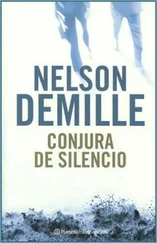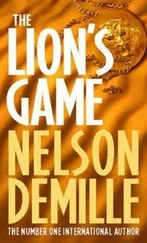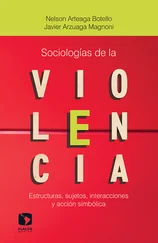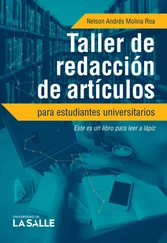Vincent, the empiricist, evidenced a growing concern that she was leaning away from science, towards some sort of mysticism. He said she was turning into a witchdoctor before his very eyes. He remarked that she returned from field trips with more and more “voodoo notions,” scoffing at her flashes of intuition, teasing that she was the only scientist he knew who factored “vibes” into her data.
She acknowledged that the vibe part might have been true in some isolated cases. But hey, it worked for her.
Having spent days and weeks on end living with indigenous tribes, she witnessed things that defied scientific explanation and learned not to challenge their validity. Besides, if she was going to display condor bones, in the absence of a prehistoric user manual why not follow the guidelines laid out by an expert? In this case, it was the shaman.
She glanced over at the bones and had to admit it nettled a bit seeing them all askew like that; it disturbed her sense of order. But was it as simple as that—merely a display that needed rearranging? Or, as Vincent suggested, did she see them as a talisman?
After a moment’s reflection she shook her head and said, “Nah,” and reached over to align the bones as per the shaman’s instructions.
The universe back in alignment, she grabbed a granola bar from her desk drawer, took a generous bite and reached down to retrieve the FedEx envelop from the floor. She checked the “Received” date, and chided Vincent across the room: “This has been sitting around for four days. How do you expect to be made famous by a letter bomb or anthrax exposure if you don’t open your mail?” She didn’t really expect a response.
She zipped off the tab and, to her amazement, pulled out two first-class plane tickets and an invitation to a Christmas yacht party at Bayside Research Inc in Texas.
Diane ran her finger over the raised gold and red lettering. “Houston again,” she mumbled.
Whenever science makes a discovery, the devil grabs it while the angels are debating the best way to use it.
∞Alan Valentine∞
In 1992, Bayside Research Inc. was two years old and not yet on its feet. By then, Raymond Bellfort had run through his seed money, his part of an inheritance from some family oil wells.
The establishment of a biotech company didn’t require the expanse of land, or the elaborate building Bellfort had purchased and renovated with the bulk of the funds. But he had been sure that at least one of BRI’s three original scientists would produce a “magic bullet” before his money ran out.
That not being the case, he borrowed from his wife’s trust fund—also oil money. Unlike Raymond’s wildcatting father and uncle, Charlotte Bellfort’s family had other people drill their wells. And the old adage held true: The farther they were from the work, the more money they made.
Another year passed at BRI—without the bonanza Raymond expected. And Charlotte informed him, in the presence of several of his staff, she was cutting off funds to the BRI “black hole.”
In the worst scenario Raymond Bellfort could have imagined, he was forced to turn to his cousin, Gabriel Carrera. And as Raymond expected, Gabriel, with his superior grades in prep school, his two degrees from Harvard, his GQ good looks, his industrial family’s tremendous wealth and his damned do-gooder attitude, granted him the money he needed to keep BRI afloat.
Raymond didn’t know which was worse: Charlotte’s financial squeeze on his gonads or the thrust of Gabriel’s generosity through his heart.
For his investment, Gabriel asked for sixty percent of BRI’s stock, prompting Raymond to curse Harvard Business School for not teaching the concept of family loyalty. Their mothers were sisters for God’s sake.
Even with the generous sum Gabriel paid for the near-worthless stock and the gentle buy-back clause he had written into the deal, Raymond was bitter that his cousin owned control of his company—therefore, of him.
Carrera watched BRI closely for the next year. He insisted on choosing projects and hiring staff, only half joking that Raymond saw great promise in anyone wearing a lab coat and carrying a cage full of mice.
Raymond’s contempt for his cousin deepened.
Then, just before withdrawing his thumb from BRI’s daily operations, Gabriel Carrera recruited Dr. Leonard Everly, leading to Raymond Bellfort’s reversal of fortune.
Dr. Everly was a chemist who had helped develop a substance to extract oil from avocados for the cosmetics industry and later on developed a product to remove oil from drilling mud for the oil and gas industry.
His latest product, a super-solvent food supplement, Flatulex , held the promise of preventing high cholesterol in people who consumed fatty foods—if the animal test results held up in humans.
He completed his animal research at BRI within several months. Then, seeing Raymond Bellfort as a kindred spirit, Everly approached him with a marketing proposal of sorts.
“Why expend BRI’s resources to complete the development of Flatulex ?” he asked Raymond. “Indeed, why even look for a jointventure with a pharmaceutical company and have to share the wealth?”
Leonard Everly had studied the industry. He knew who would jump at the chance to develop the drug with BRI. But better yet, he knew which companies would collapse should his product enter the marketplace.
“It’s disruptive technology. Just a rumor of Flatulex’s existence—even before clinical trials—could trash some companies’ stocks,” he said. “Think of the cholesterol-lowering drugs on the market and downstream to all the companies with treatments for heart disease. Do you know how many angioplasties were done last year and how many stents inserted?
“Just like the oil companies inducing the automakers to shelve the development of the battery-operated car for years, we’ll have companies standing in line to buy Flatulex off the market – and bury it. Hell, we might even get the American Medical Association to kick in.”
Leonard Everly assured the enraptured Raymond Bellfort that his days of struggle were behind him. “Forget the interminable Food and Drug Administration paperwork and procedures.” Everly promised an immediate windfall with his “reverse marketing” plan. Bellfort approved of the proposal even before it was completely laid out.
Dr. Everly didn’t share the glitch he had found in his research with Raymond Bellfort. It would take a buyer years to find it, that is, if they even went to the expense to look.
Within three months, Flatulex was sold through a biotech broker in Germany. All transactions were done through numbered offshore accounts.
Unbeknownst to Gabriel Carrera, the majority stockholder, only a third of the funds showed up on BRI’s books as revenue. The rest was split between Bellfort and Everly who agreed that select future projects would be handled the same way.
And eureka! BRI had redefined bioextortion.
* * *
The sprawling Bayside Research Inc complex stood atop a bluff on Five Mile Cove, a scoop out of the western shore of Galveston Bay. Local boaters nicknamed the four-story Greek revival main building “The Texas White House.”
Dense stands of live oaks—trunks bent away from prevailing winds, branches bearded with Spanish moss—shaded outbuildings and jogging trails throughout the grounds.
BRI’s marina, at the base of the bluff, held the one-hundred-twenty-foot motor yacht, Enterprise; a forty-foot sailboat, Woodwind; a research vessel and several boat slips for visitors.
Raymond Bellfort considered his yacht and harbor, both built in the company’s ninth year, to be grand measures of his success in the burgeoning field of biotechnology.
Читать дальше












